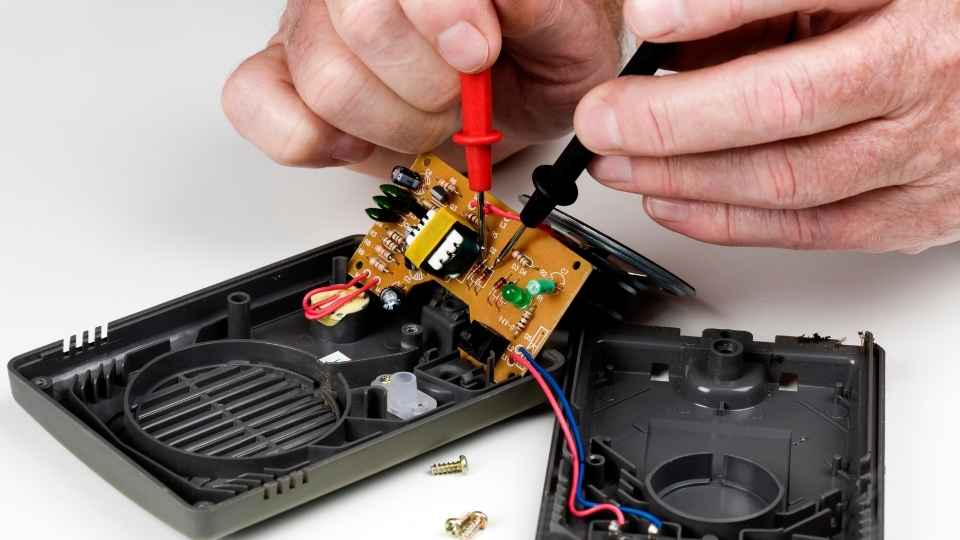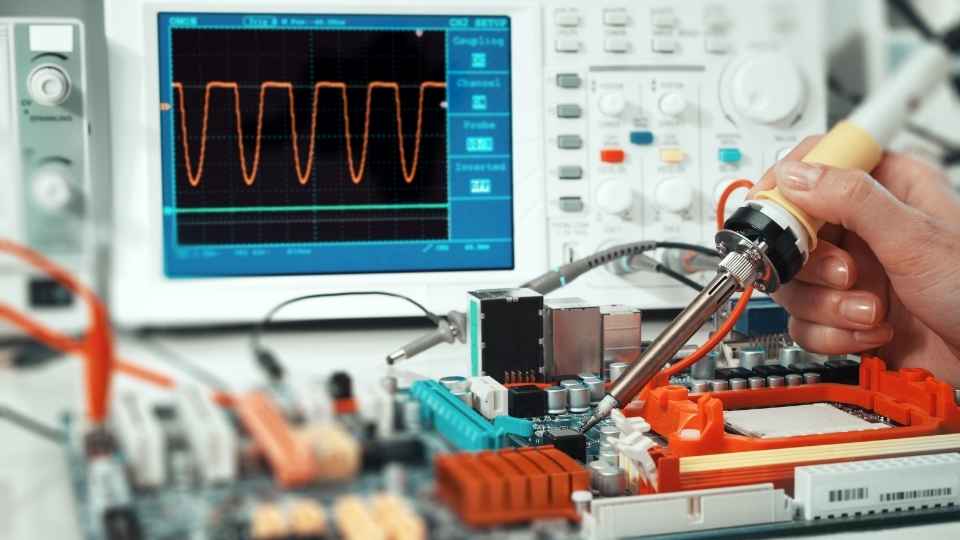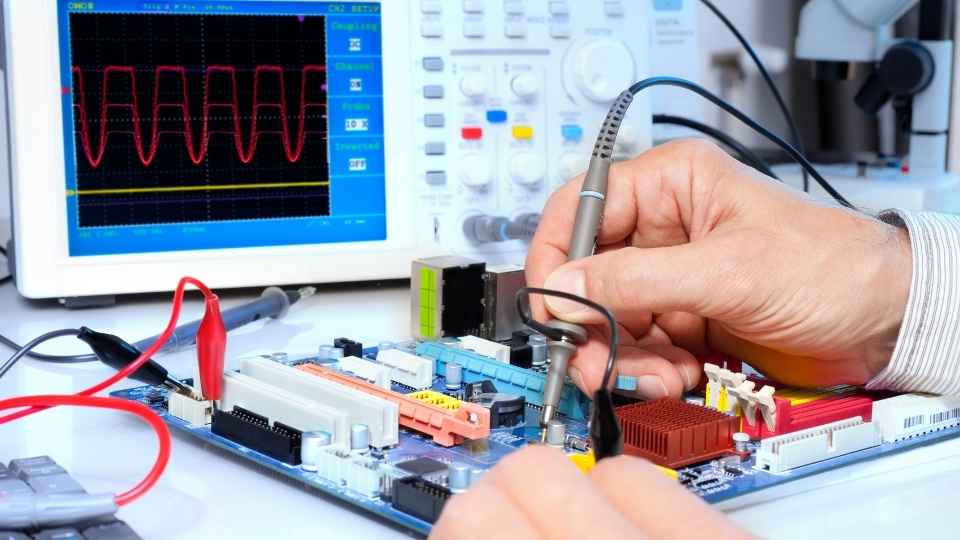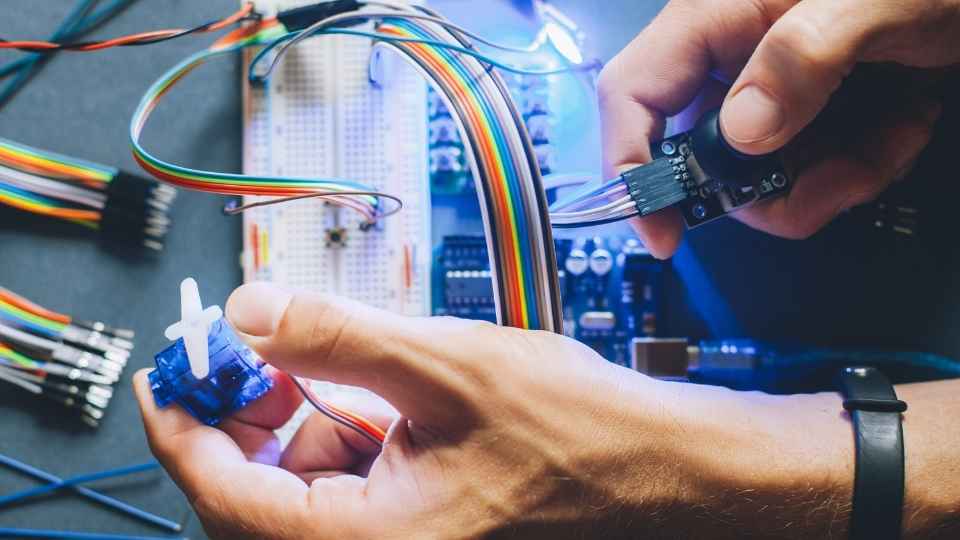
In the realm of RF circuit design, achieving optimal signal propagation requires a delicate balance. One crucial aspect that often goes unnoticed is impedance matching. While it may sound like an esoteric concept, impedance matching plays a pivotal role in ensuring the efficient transfer of signals within a circuit.
In this article, we will delve into the intricacies of impedance matching, exploring its significance, techniques, and practical tips for accomplishing this task with precision. Whether you are a seasoned engineer or an aspiring enthusiast, join us as we uncover the secrets to perfectly matching impedance in RF circuits.
Key Takeaways
- Impedance matching is crucial for efficient signal propagation and to minimize reflections in RF circuit design.
- Different techniques such as lumped element networks, transmission line transformers, and stubs or resonators can be used for impedance matching.
- Careful selection and design of impedance matching elements optimize signal propagation and minimize power loss and distortion.
- Impedance matching networks, such as L-section, T-section, and π-section networks, find applications in amplifiers, filters, antennas, and transmission lines to ensure efficient power transfer and minimize signal reflections and distortions.
The Importance of Impedance Matching in RF Circuit Design
Impedance matching plays a crucial role in RF circuit design as it ensures efficient signal propagation and minimizes reflections. In an RF circuit, impedance refers to the resistance offered by a component or transmission line to the flow of alternating current. When the impedance of different components or sections of a circuit is not matched properly, signal reflections occur, leading to power loss and distortion. Impedance mismatch can result in decreased efficiency, increased noise levels, and reduced overall performance of the RF system.
By achieving proper impedance matching, maximum power transfer from the source to the load can be achieved, resulting in improved signal integrity and better overall system performance. This is particularly important in applications where high-frequency signals are transmitted over long distances or through multiple components.
To achieve impedance matching, various techniques such as using transmission lines with specific characteristic impedances, employing impedance transformers like baluns or quarter-wave transformers, or utilizing matching networks are employed. These techniques ensure that input and output impedances are properly aligned for optimal signal propagation.
Understanding Impedance and Its Role in Signal Propagation
Understanding the relationship between electrical characteristics and the successful transmission of signals is crucial in ensuring effective communication within a given system. In the context of RF circuit design, impedance plays a significant role in signal propagation. Impedance, measured in ohms, represents the opposition to the flow of alternating current (AC).
Here are two important aspects to consider when understanding impedance and its role in signal propagation:

Characteristic Impedance:
It refers to the inherent impedance offered by a transmission line.
Matching the characteristic impedance of a transmission line with that of connected devices minimizes reflections and maximizes power transfer.
Input/Output Impedance:
Each device has an input and output impedance that needs to be matched for proper signal transfer.
Mismatched impedances lead to signal reflection, loss of power, and distortion.
Common Techniques for Achieving Impedance Matching in RF Circuits
One effective approach to ensure efficient communication within a given system involves optimizing the electrical characteristics of connected devices to minimize reflections and maximize power transfer. In RF circuit design, impedance matching plays a crucial role in achieving this goal. Impedance mismatch between components can lead to signal reflections, causing degradation in performance and loss of power. There are several common techniques used to achieve impedance matching in RF circuits. These include using lumped element networks such as capacitors and inductors, transmission line transformers, and stubs or resonators. Each technique has its own advantages and limitations, depending on factors such as frequency range, bandwidth requirements, and physical size constraints.

By carefully selecting and designing these impedance matching elements, engineers can optimize signal propagation within the system.
In the following section, we will discuss important design considerations for matching impedance in transmission lines.
Transitioning into the subsequent section about 'design considerations for matching impedance in transmission lines', it is essential to understand the various factors that need to be taken into account when designing transmission lines for impedance matching purposes.
Design Considerations for Matching Impedance in Transmission Lines
To achieve optimal performance in transmission lines, engineers must carefully consider factors such as frequency range, bandwidth requirements, and physical size constraints when designing for impedance matching purposes. Impedance matching is crucial to ensure efficient signal propagation and minimize reflections or losses within the circuit.
When designing for impedance matching in transmission lines, there are several important considerations:
Frequency Range: The design should take into account the specific frequency range of operation to ensure that the impedance match is effective across this range.
Bandwidth Requirements: It is essential to determine the required bandwidth of the circuit and design for impedance matching within this bandwidth.

Passive Components: Careful selection and placement of passive components such as resistors, capacitors, and inductors can help achieve impedance matching.
Transmission Line Geometry: The physical dimensions of the transmission line itself play a significant role in achieving proper impedance matching.
Impedance Matching Networks: Types and Applications in RF Circuit Design
Impedance matching networks play a crucial role in optimizing the performance of RF circuits by ensuring efficient transfer of power between different components. These networks are used to match the impedance of the source and load, allowing for maximum power transfer and minimizing signal reflections.
There are various types of impedance matching networks, including L-section, T-section, and π-section networks.
L-section networks consist of a series inductor followed by a shunt capacitor or vice versa. They provide good impedance matching over a limited frequency range.
T-section networks use two series capacitors with an inductor connected between them. This configuration offers wider bandwidth but introduces additional loss due to the extra components.
π-section networks utilize two shunt capacitors with an inductor connected between them. This configuration provides better impedance matching over a broader frequency range compared to L-section or T-section networks.

Impedance matching networks find applications in RF circuit design for various purposes such as amplifiers, filters, antennas, and transmission lines. They ensure that signals propagate efficiently without significant losses or distortions.
Practical Tips and Tricks for PeRFectly Matching Impedance in RF Circuits
Achieving impedance matching is crucial in RF circuits to ensure optimal signal propagation and prevent power reflections. There are several practical tips and tricks that can help achieve perfect impedance matching.
These include using passive components such as capacitors, inductors, and resistors to create impedance matching networks.
Another technique is employing transmission lines with specific characteristic impedance.
Additionally, utilizing Smith charts can be helpful for visualizing and analyzing impedance matching.
Importance of Impedance Matching
The significance of matching the impedance in RF circuit design cannot be overstated. Impedance matching is crucial for efficient signal propagation and minimizing losses in RF circuits.
Here are two key reasons why impedance matching is important:

Maximizing Power Transfer:
Matching the impedance ensures maximum power transfer between source and load.
When the source and load impedances are matched, there is minimal reflection, allowing for optimal power transmission.
Minimizing Signal Distortion:
Impedance mismatch can cause signal reflections, leading to distortions.
By achieving impedance matching, we can minimize these reflections and maintain signal integrity.
Impedance matching plays a vital role in ensuring efficient RF circuit performance by maximizing power transfer and minimizing signal distortions. Now let's explore some techniques for achieving impedance matching in RF circuits.

Techniques for Achieving Impedance Matching
Impedance matching is a crucial aspect of RF circuit design, as it ensures efficient signal propagation and minimizes reflections. Achieving impedance matching involves adjusting the load impedance to match the source impedance, or vice versa. Several techniques can be employed to achieve impedance matching in RF circuits.
One commonly used technique is the use of transmission lines with specific characteristic impedances. By carefully selecting the dimensions and materials of the transmission line, its characteristic impedance can be made to match that of the source or load.
Another technique involves using reactive components such as capacitors and inductors. These components can be strategically placed in the circuit to cancel out any mismatch between the source and load impedances.
Additionally, transformers can be used to achieve impedance transformation by providing a suitable turns ratio.
Overall, these techniques enable designers to achieve optimum signal transfer without losses due to reflection or mismatches, ensuring reliable and efficient operation of RF circuits.
Troubleshooting Impedance Mismatch Issues in RF Circuit Design
Troubleshooting impedance mismatch issues is a critical aspect of RF circuit design. Impedance mismatches can cause signal reflections, leading to degraded signal quality and reduced overall system performance.
To address these issues, engineers employ various techniques such as impedance matching networks, transmission line adjustments, and signal conditioning methods.

These techniques are used to optimize the impedance match and ensure efficient signal propagation in RF circuits.
Causes of Impedance Mismatch
One of the key factors affecting signal propagation in RF circuit design is the occurrence of impedance mismatch. Impedance mismatch happens when the characteristic impedance of a transmission line or device does not match with the source or load impedance. This can lead to reflections, loss of power, and distortion in the transmitted signal.
There are several causes of impedance mismatch that designers need to be aware of:
Frequency-dependent effects:
Skin effect: High-frequency signals tend to concentrate on the surface of a conductor, resulting in increased resistance.
Dielectric losses: The dielectric material between conductors can introduce losses at high frequencies.
Connection issues:

Poorly soldered joints or connectors can introduce additional resistance and capacitance, causing impedance mismatches.
Inadequate grounding can lead to differences in ground potentials, causing reflections.
Understanding these causes and implementing appropriate design techniques such as proper trace routing, component selection, and matching networks can help minimize impedance mismatches and improve signal propagation in RF circuit design.
Impact on Signal Quality
Reflections caused by impedance mismatch can degrade signal quality and result in loss of power and distortion. When an RF signal encounters an impedance mismatch, part of the signal is reflected back towards the source. This reflection can cause standing waves to form along the transmission line, leading to fluctuations in voltage amplitude and phase. These variations in the signal can result in a loss of power as well as distortion, leading to a degradation in overall signal quality.
To ensure optimal performance and avoid these issues, it is crucial to match the impedance throughout the entire RF circuit. This involves carefully selecting components with matching characteristic impedances and employing techniques such as using transmission lines with controlled impedance or implementing impedance matching networks.
By addressing impedance mismatches effectively, engineers can minimize reflections, maintain signal integrity, and maximize power transfer efficiency within their RF circuits.
In the subsequent section, we will explore various techniques for troubleshooting impedance mismatches to ensure robust and reliable signal propagation.

Techniques for Troubleshooting
To address impedance mismatches effectively, engineers can employ various techniques that focus on analyzing and optimizing the electrical characteristics of the circuit components. These techniques include:
Impedance matching networks: By adding passive components like resistors, capacitors, and inductors, engineers can create a network that matches the impedance of the source with that of the load, ensuring maximum power transfer.
L-section matching network: This technique uses a combination of series and parallel reactive elements to achieve impedance matching.
T-section matching network: Similar to L-section, but with an additional element for better performance at higher frequencies.
Transmission line techniques: Engineers can use transmission lines such as coaxial cables or microstrip lines to match impedance between different stages of a circuit.
Frequently Asked Questions
What Are Some Common Materials Used for Impedance Matching in RF Circuits?
Common materials used for impedance matching in RF circuits include transmission lines, transformers, and lumped element components such as capacitors and inductors. These materials are selected based on their electrical properties to ensure optimal signal propagation and minimize reflections.
How Does Impedance Mismatch Affect Signal Quality in RF Circuits?
Impedance mismatch in RF circuits can significantly impact signal quality. It leads to reflections, loss of power, and distortion. Properly matching impedance ensures maximum power transfer and minimizes signal degradation for optimal performance.

Are There Any Limitations or Drawbacks to Using Impedance Matching Networks in RF Circuit Design?
Impedance matching networks in RF circuit design have limitations and drawbacks. These include increased complexity, additional cost, and potential signal loss due to imperfect matching. However, when implemented correctly, they can significantly improve signal propagation and maximize power transfer.
Can Impedance Matching Be Achieved Without the Use of Additional Components?
Achieving impedance matching without additional components is challenging in RF circuit design. However, through careful selection of transmission line characteristics and layout optimization, it is possible to minimize impedance mismatches and improve signal propagation efficiency.
How Does the Length of a Transmission Line Affect Impedance Matching in RF Circuits?
The length of a transmission line in RF circuits can affect impedance matching. Changes in the length can lead to variations in the characteristic impedance, which may require adjustments to maintain optimal signal propagation and minimize signal reflections.
 Basic Electronics ConceptsEssential ToolsCircuit Design BasicsMicrocontrollersDIY Electronics ProjectsRoboticsPrivacy PolicyTerms And Conditions
Basic Electronics ConceptsEssential ToolsCircuit Design BasicsMicrocontrollersDIY Electronics ProjectsRoboticsPrivacy PolicyTerms And Conditions
